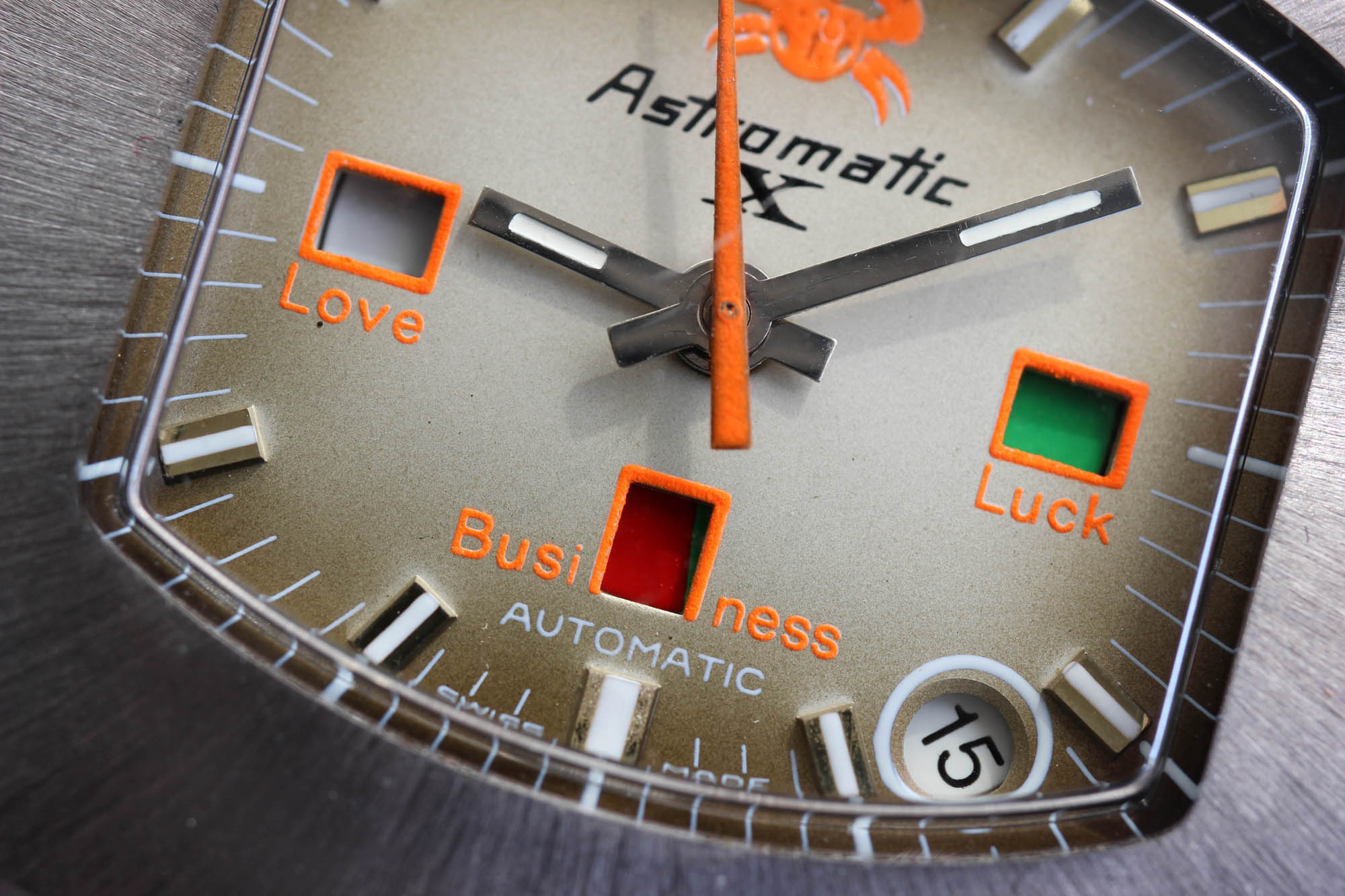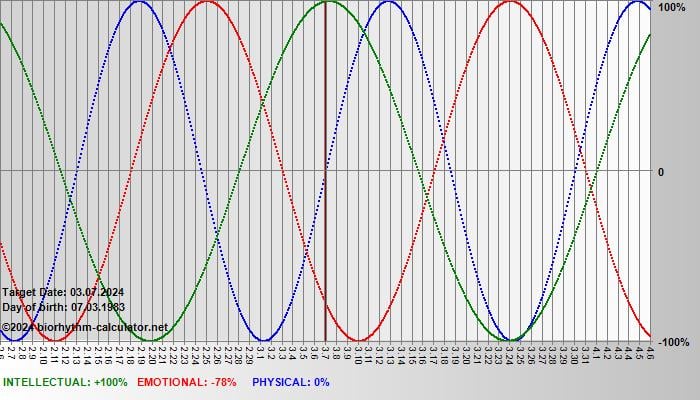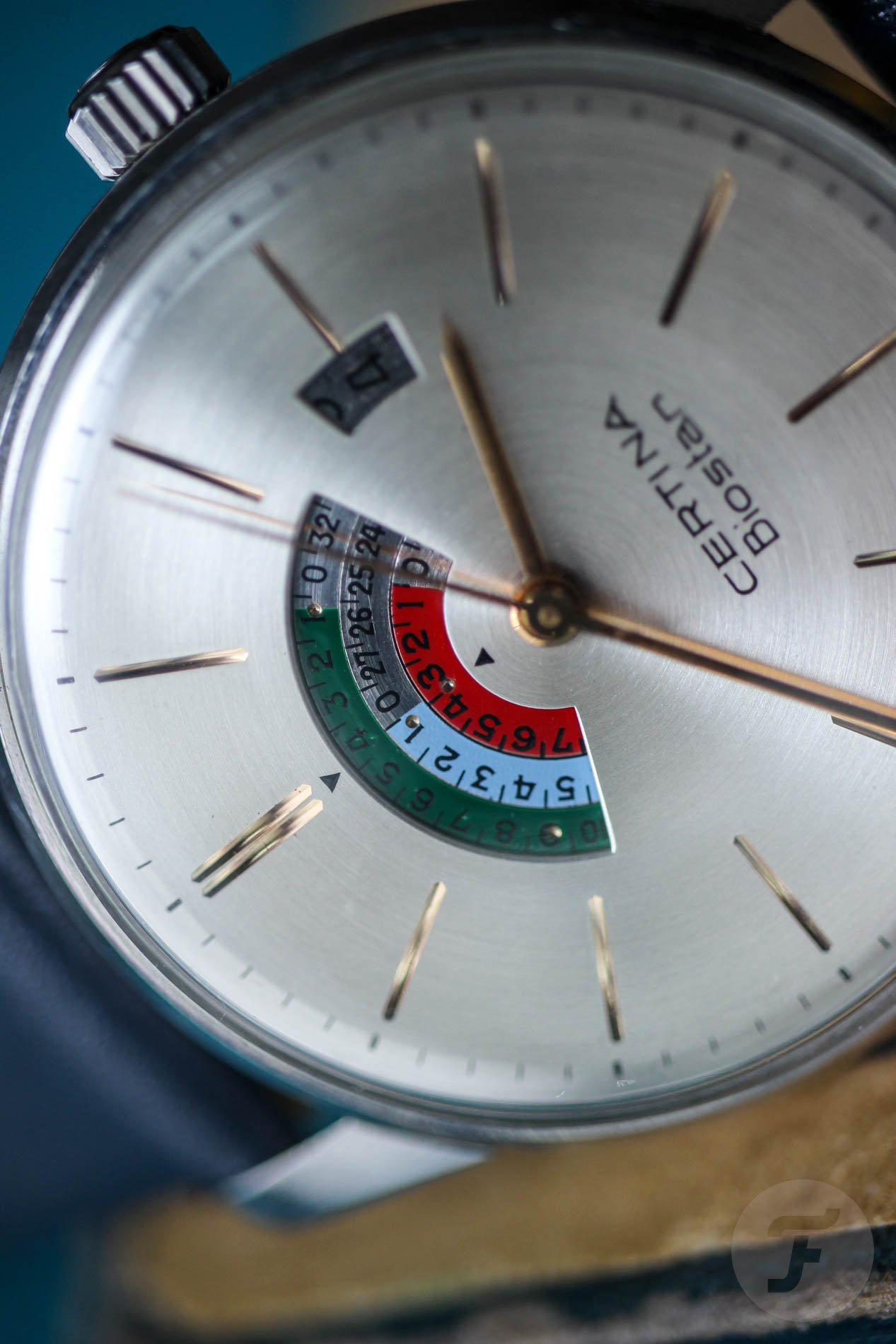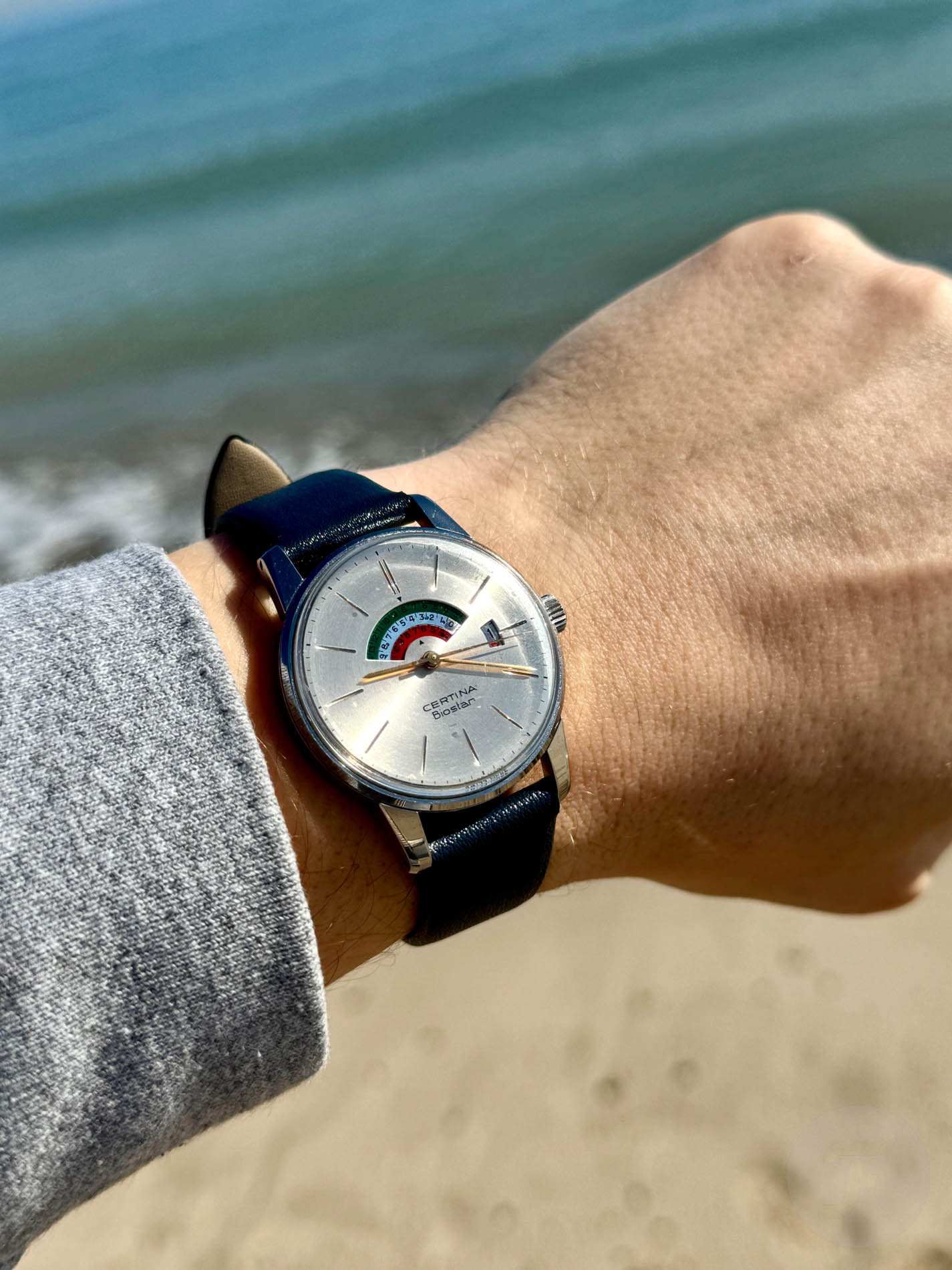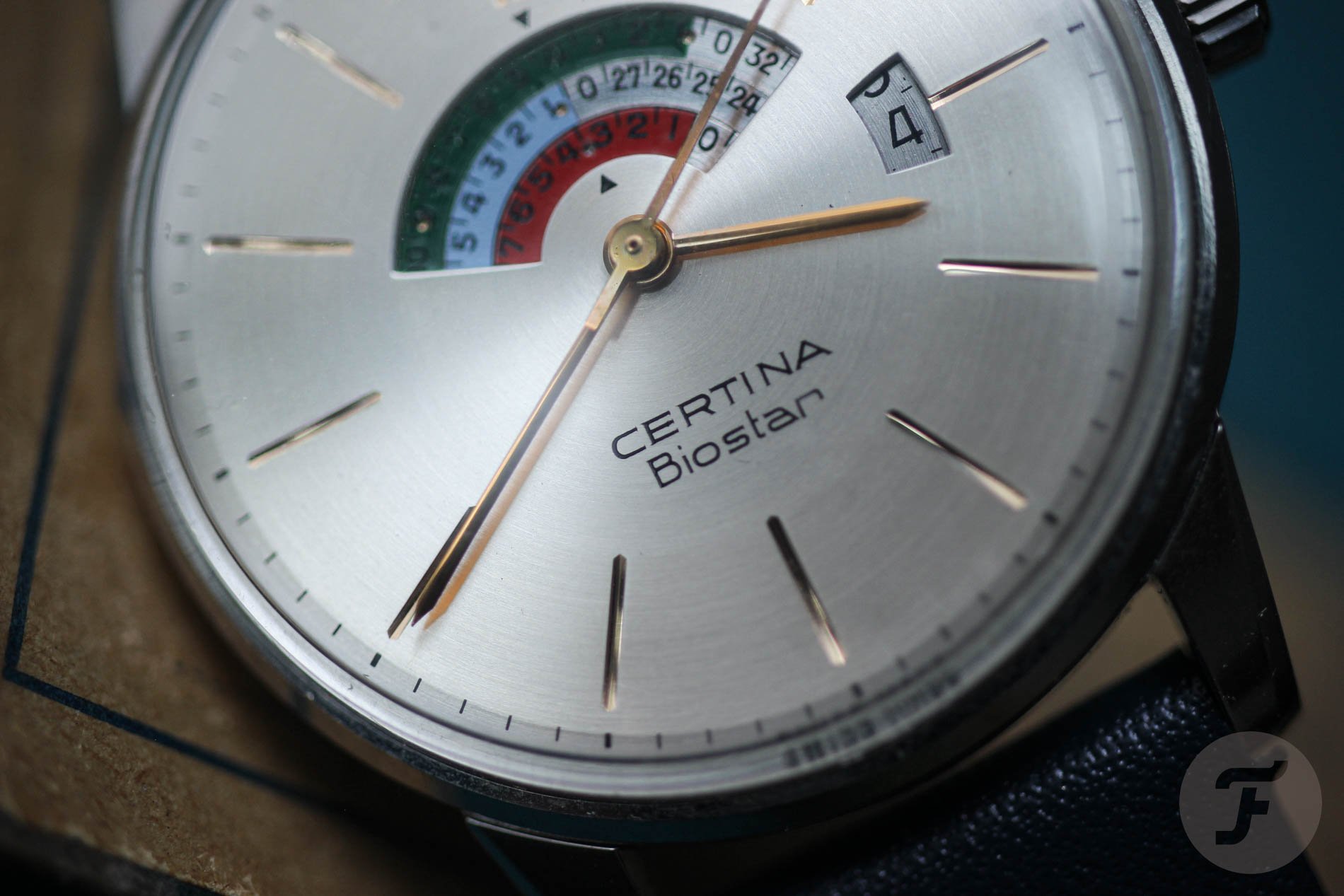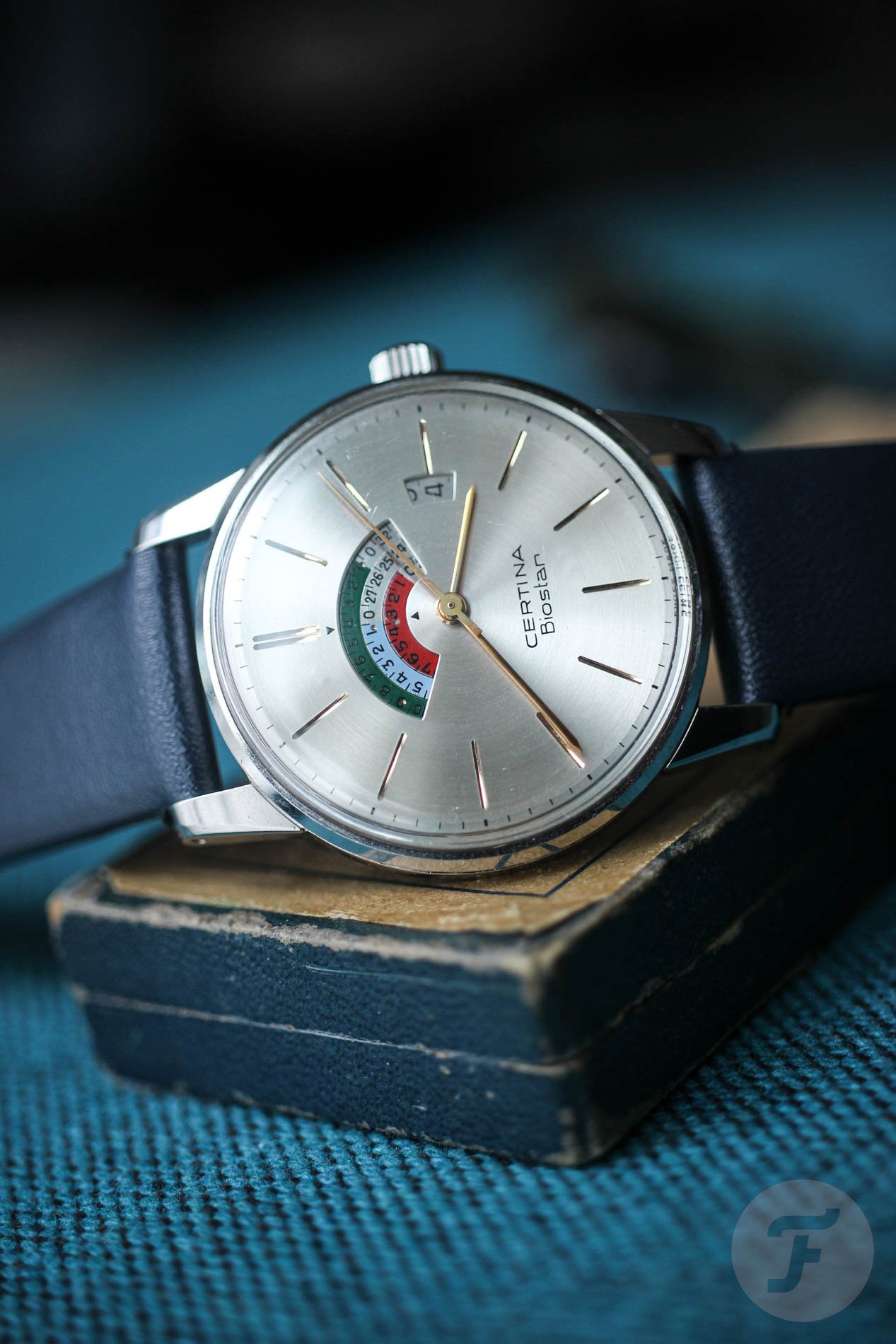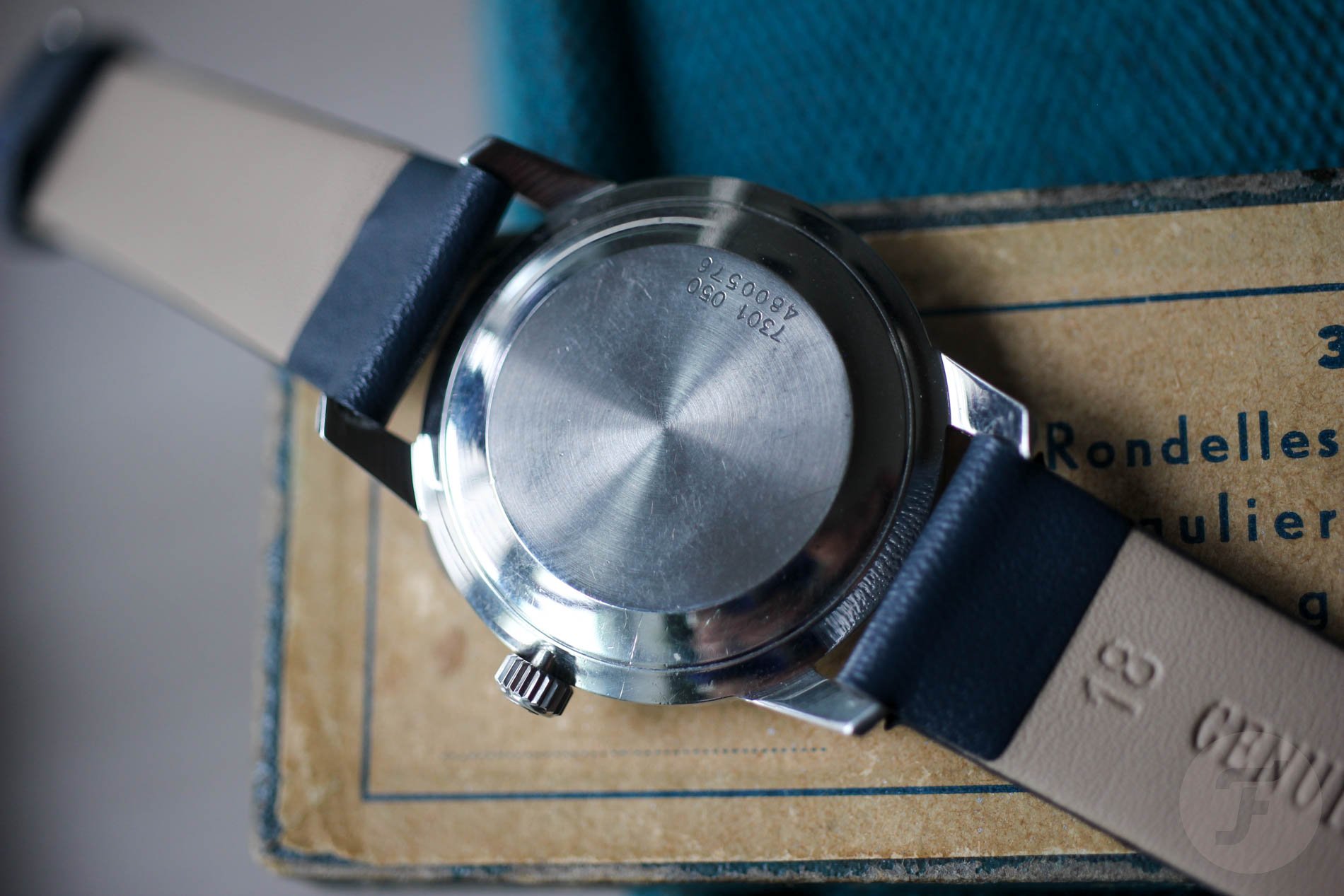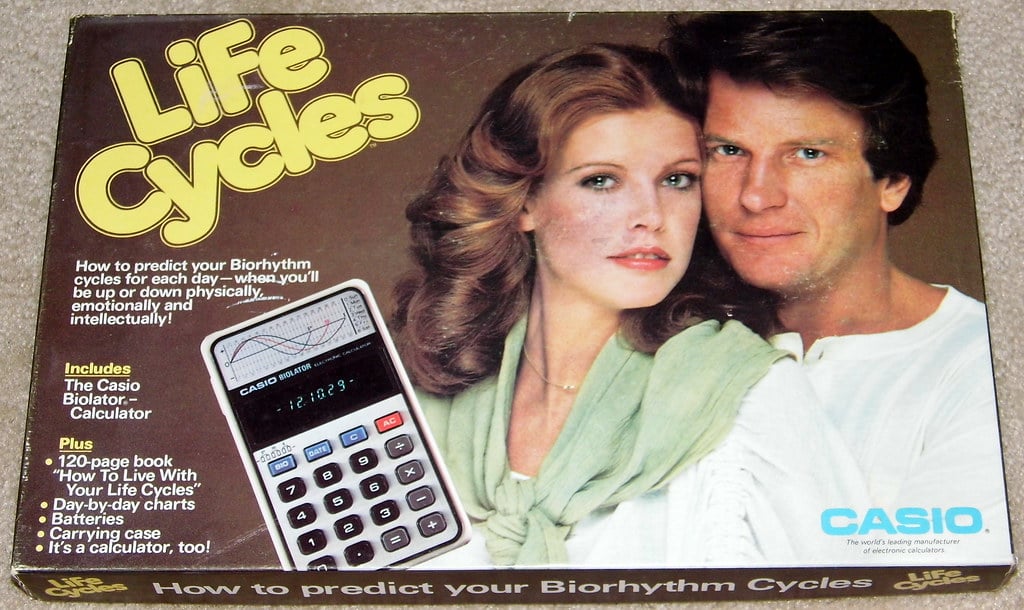#TBT Plan Your Life With The Certina Biostar
I don’t know if there are any left today. Late-19th-century biorhythm theory, which got another 15 seconds of fame in the 1970s, is the pseudoscientific idea that people’s daily lives are significantly affected by rhythmic cycles with periods. There is a 23-day physical cycle, a 28-day emotional cycle, and a 33-day intellectual
cycle. In the 1970s, Certina created the Biostar watch to help wearers check what their biorhythms looked like in a second.
An astrological warm-up
I wanted a Certina Biostar just for the fun of it. It belongs in the same category as my Astromatic X, a fortune-telling watch from the mid-1970s. The astrology craze in the 1970s was huge. The first line of my excellent Astromatic X booklet says that my watch is regulated according to my astrological sign. Imagine that! It monitors my horoscopical tendency according to three essential areas — love, luck, and business. And it’s even a “scientific super-gadget.” Oh, boy. Give me a moment; I need to wipe the tears from my eyes…
Does that sound “shaggy”?
The 1970s were weird. Besides astrology, there was another, more scientific frenzy running around — the biorhythm theory. According to this, biological cycles influence people’s lives, affecting their ability in various domains, such as mental, physical, and emotional activity. These cycles begin at birth and oscillate in a steady sine-wave fashion throughout life. The theory suggests that modeling them mathematically can help people predict their levels of ability in each of these domains from day to day.
An example
What you see above is, supposedly, my biorhythm for two months. Well, at least that’s what the website that generated it says. An old print ad I found says that there was some Biorhythmics Centre in Basel that could help set customers’ Biostars to their birth dates. Anyway, I seem to be at the peak of my intellectual biorhythm, crossing to critical on my physical biorhythm, and heading to the bottom of my emotional biorhythm. I am not really sure how I feel after “learning” that. I am on a family vacation in Spain, and I am just fine. Emotionally, I am as “low” as one could be on a vacation. I spend days looking at dolphins in the aquarium and rhinos in the zoo. In other words, there are no intellectual challenges I am going through; I am just wandering around Valencia.
The three magic discs of the Certina Biostar
Instead of checking diagrams, which was not so easy in the 1970s, you could just check the Certina Biostar on your wrist. A huge aperture with three differently colored discs shows the state of each cycle. When red is displayed, your capacity for strenuous activity, such as sports, will be at its peak. When the blue disc appears, you’ll be most optimistic and creative. Finally, when the green one comes up, your mind will be at its sharpest. The critical days? They’re when the colors change to silver.
Well, if you put some effort in and tried to cross-check my diagram and the watch, you could notice that my Biostar is not aligned with my biorhythms. I initially wanted to sync it, which I could do with the help of this manual. But since I realized that I could never let the watch stop after that without resyncing it the next time, I dropped the idea. What comes next is equally funny!
A “date disc” that’s not a date disc
If you expect the “date disc” to count up to 31, you’re in for a surprise. The disc only has numbers from one to seven. One represents Monday, and seven is for Sunday. In addition to the day of the week, the disc also fulfills an auxiliary function. If your Biostar stops because you forgot to wind it, the day disc shows the standstill time. So you can advance a day or two to get your biorhythm forecast synced again. Ironically enough, this only applies if you notice the standstill in the same week. Imagine what would happen if you confused the weeks!
A real tragedy
It may sound funny today, but biorhythm theory was big back then. This fascinating article from Vice says, that “newspapers routinely interviewed experts to see how biorhythms would play out in big games. A 1978 New York Times story said that managers for several Major League Baseball teams adjusted pitching rotations in accordance with biorhythms.” Reading it through gives me chills.
“Actor Clark Gable’s heart attack happened on a critical day in 1960. Soon after, Swiss biorhythms expert George Thommen warned that Gable would soon be facing a double critical day and that his health was in danger. Amazingly, he was right. Gable suffered a fatal heart attack on the very day predicted. Such predictive uses of biorhythms were rare, but there were plenty of retrospective applications of the theory. Marilyn Monroe and Judy Garland fatally overdosed on critical days. Gerald Ford pardoned Richard Nixon on a critical day. JFK was assassinated on a critical day.”
Notes on Biostar production
I’m not sure how precise the following dates are, but the Certina Biostar was supposedly in production from about 1965 until 1974. It came not only as a wristwatch but also as an electronic pocket watch and electronic desk clock. Most of the watches produced were electronic, which makes sense since wearers wouldn’t want to reset them each time they stopped. But I didn’t like the C-shaped cases, so I landed an early hand-wound model with a classy round case.
Last thoughts on the Certina Biostar
Just look above; tons of physical calculators could help people predict their physically, emotionally, and intellectually fruitful days. We may find the biorhythm pseudotheory silly today, just as we can find this watch utter nonsense. But again, as I believe I’ve stated in the past, I wish I could travel back to a particular era. I could by never-ending study, collecting materials, stories, etc. But I don’t have that much time, and it will never be like experiencing it “live.” Happy hunting!


